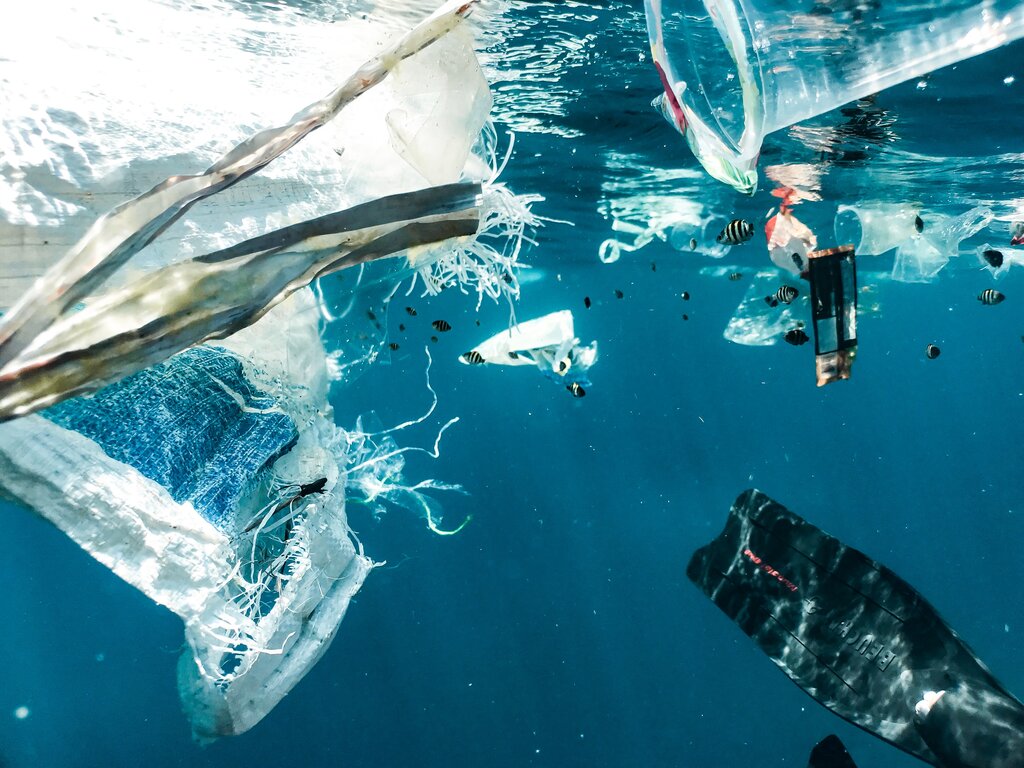Carbon levels have continued to rise since industrialisation, endangering all life on Earth in more ways than one can imagine. Humanity’s dependence on fossil fuels has destabilised financial security, causing catastrophic heat waves and floods, impacting millions of people’s health, as well as threatening global biodiversity. Are we, however, capable of determining how much we have lost and whether the environmental damage we have caused in the name of economic development was worthwhile? Are we capable of weighing the efforts required to avert a climatic disaster on time? But first, we need to know about the Social Cost of Carbon – the statistics and challenges that surround climate change if we are to take control of it. This necessitates awareness at a granular level and a willingness to challenge ourselves to do and be better.
—
What Is the Social Cost of Carbon?
The Social Cost of Carbon (SCC) is an estimate of the economic expenses or losses incurred when an extra tonne of carbon dioxide is released into the atmosphere. Associate Professor Marshall Burke of Earth System Science at Stanford University describes it as the loss suffered when an extra tonne of carbon dioxide in the atmosphere lingers around for a while, producing global warming and provoking life-threatening phenomena.
As a result of global warming, melting ice sheets raise sea levels, posing a threat to coastal and island settlements. Tropical cyclones, hurricanes, and typhoons feed on warm ocean surface waters, and storms of this magnitude frequently demolish houses and communities, resulting in deaths and significant economic losses. Natural catastrophes triggered by climate change cause 23.1 million people to be relocated each year on average, contributing to poverty’s onset and persistence. Extreme weather events are also leading to a rise in global hunger and malnutrition as agricultural productivity declines, in addition to the extinction of species and overall biodiversity decline. Moreover, changing weather patterns are increasing the spread of diseases such as malaria, leading to an increase in sickness and death rates, which makes it more difficult for healthcare systems to keep up.
The SCC is therefore the price we pay for the destruction caused by rising temperatures.
The Importance of Understanding Carbon’s Social Cost
Michael Greenstone, Director of Energy Policy Institute at the University of Chicago, the Chief Economist of the Council of Economic Advisers under the Obama administration, and the creator of SCC, described it as “the most important figure you’ve ever heard of”. But why? How does it help differently from other environment statistical indicators for promoting conservation efforts?
A cost-benefit analysis is a process of analysing the expected costs and benefits associated with a decision or proposal to ascertain whether the plan is cost-effective. Simply put, it is computed by deducting the project’s overall cost from the expected benefits. The decision would be sound if the anticipated advantages outweigh the costs. If, on the other hand, the costs outweigh the benefits, then the initiatives should be thoroughly scrutinised. A cost-benefit approach is needed to review decision-making processes concerning climate mitigation strategies as reducing carbon emissions becomes prohibitively expensive when all economic processes and outcomes depend on it.

Marine plastic pollution. Photo: Unsplash
This exemplifies the worldwide nature of accepting new technologies, products, and innovations in the commercial sector without conducting extensive research into the implications of global usage of the said product on life on Earth. One significant example would be the use of plastics. An extreme increase in plastic production started in the 1950s, but the cumulative number of all plastic ever made is exceptionally high and 91% of it is not recycled as discussed by Jenna Jambeck, a University of Georgia environmental engineer who is recognised for her research on plastic waste in oceans. It takes more than 400 years for plastics to degrade and only 12% of it is incinerated, which in turn also releases carbon dioxide. All things considered, there are waste management emissions in addition to the manufacturing, production and logistic emissions, all contributing to the overall damage caused by extra carbon in the atmosphere. Mitigation policies and strategies would need to replace existing systems and economic processes, and promote research for alternative approaches which makes them highly expensive.
The SCC can assist us in weighing the costs and benefits of climate mitigation strategies. It quantifies the value of the advantages we would gain or the amount of destruction we would prevent if we reduced carbon emissions by one tonne. Now that the benefit has a monetary value, we can compare it to the costs of implementing climate change policies and solutions. The outcome would show how much it is worth applying a certain strategy to avert the projected destruction.
This makes SCC an important factor in evaluating government policies and mitigation measures and understanding the ground truth of them. But the lack of awareness and discussion among the general public still makes it an unheard figure.
The Social Cost: Factors and Estimation
The social cost of carbon emissions depends primarily on three aspects as stated by Professor Myles Allen at the University of Oxford: how the global climate responds to the emissions; how much harm a certain temperature rise causes; and how much weight is given to the impacts on future generation in comparison to the impacts on the present generation.
The cost-benefit analysis is a complex process, and one of the complexities is estimating the monetised values for benefits and costs. It is relatively simple to determine the costs of implementing environmental policies, initiatives, and remedies. For example, the cost of restructuring an automobile company’s manufacturing processes to transition from conventional to electric automobiles. Another example is the expense of transitioning from a fossil fuel-based economy to a clean energy-based. On the other hand, benefit or SCC estimation is a time-consuming and complex process. It signifies the crops and lives saved, as well as the avoidance of destruction. These benefits will be felt by many diverse populations around the world for many decades to come and hence the monetary worth of benefits becomes much more difficult to handle as the relative effects of additional carbon are apparent over time.
The social cost of carbon focuses on the socio-economic factors that can be measured where we have strong data on what outcomes look like and the effects of rising temperature on different economic sectors. It is calculated by pooling the results of integrated assessment models, namely the Dynamic Integrated Climate-Economy model (DICE), Framework for Uncertainty, Negotiation and Distribution model (PAGE) and Policy Analysis of the Greenhouse Effect model (FUND). The models take into account the same categories of data, socioeconomic, climate, damages, and discounts but work in considerably different ways to translate emissions to temperature rise hence there are even bigger differences when it comes to estimating damages associated with temperature rise. Models try to trace the path of carbon emissions and then calculate the damage caused by one-tonne extra carbon, the difference in the damages is the SCC.
The information required for the SCC calculation:
- Socioeconomic predictions: The population and economic development both affect the amount of carbon emitted into the atmosphere. Population and economic growth are important indicators of the overall damage that would be caused by carbon emissions.
- Climate projections: The emissions released would change climatic patterns, and predictors such as the rate of change, the temperature and sea-level rise would be able to reveal the monetised value of destruction caused by such changing weather patterns.
- Benefits and costs: The cost-benefit analysis would entail the damage caused by rising temperatures on crucial societal sectors such as agriculture, economy, and health and the costs of implementing mitigation measures to avoid the said effects.
- Discount rate: The discount rate represents the rate at which society is willing to trade present gains for future ones, because the majority of the benefits from the policies will come in the form of prevented damage in the future, and policies will be paid for today. A high discount rate indicates that the money in hand is more valuable and that spending less today to allow future generations to bear more of the costs is preferable to spending more today to protect future generations; a low discount rate indicates a willingness to spend more today to protect future generations.
There are several unquantifiable factors as well which need to be included in the calculation of the SCC as well such as the number of deaths, and civil conflicts related to the changing climate. The need to update the models and features based on the recent research is therefore being advocated by the scientific community as discussed by Assistant Professor Tamma Carleton, University of California. The models currently used are based on decade-old studies, which as a result, miscalculate the speed of warming and ignore carbon cycle feedback and lower the discount rates.

Flooding. Photo: Unsplash.
Countries with a High Social Cost of Carbon
The highest country-level social cost of carbon emissions was calculated to be around $90 per tonne of CO2 in India, which means that each additional tonne of CO2 will cost the Indian economy $90. India is followed by the United States, where the economic costs of CO2 emissions are estimated to be $50 per tonne. The social cost of carbon is thought to be significantly larger than current estimates because recent research has demonstrated that global warming slows economic growth, making it highly expensive.
China, India and the United States are the largest carbon polluters in the world and hence the efforts made by these countries are noteworthy. China’s social cost of carbon is roughly $26 per tonne, lower than America’s despite similar temperatures and GDP, which suggests it would gain more from investing its money now rather than spending it on reducing carbon pollution, at least in comparison to a more established country like the US.
The US is trying to avert the changes made by the Republican administration, whose argument was two-fold: the first was that only the domestic damage should be considered, and second, the discount rates should be high, thus passing the consequences onto the future generation. The Trump administration alone had reduced the cost between $1 to $7. But the Biden administration raised it back to $51, a pre-republican level.
The present administration in India has set ambitious growth goals for the manufacturing sector, including raising its contribution to its GDP from 16% to 25% by 2025. But this will most likely conflict with the climate goals. India already suffered a loss of more than $210 billion annually as of 2018.
The major source of carbon emissions worldwide is the burning of fossil fuels for electricity, manufacturing, and transportation. Renewable energy is being promoted at a large scale across the globe to turn down the devastating effects of excess carbon in the atmosphere.
China, the United States, and Brazil were the top three countries for installed renewable energy in 2021. With a capacity of roughly 1,020 gigawatts, China was the world leader in renewable energy installations. In the second place, the US had a capacity of roughly 325 gigawatts. India’s installed renewable energy capacity expanded by 286% in the last seven and half years, reaching more than 151.4 gigawatts, or roughly 39% of the country’s overall capacity. The country’s renewable energy capacity objective was to reach 175 gigawatts by the end of 2022 and achieve net-zero emissions by 2070. Fulfilling half of its electricity needs with renewable energy sources by 2030 will be a watershed moment in the global fight against climate change.
Economic Development and Environmental Challenges
The concept of sustainable development has been gaining support for some time, and the need to be mindful is now more important than ever. In the near-term, environmental sustainability and development may appear to be at odds. Industrial development, for example, may be incompatible with the preservation of natural resources. However, in the long run, the wise use of natural resources now will assist to ensure that resources are accessible for long-term industrial expansion.
The cost of carbon is not just about monetising damages, it could prove to be an outstanding method for wise allocation of natural resources, policymaking and evaluating ground-level implementations. The majority of studies show that environmental rules can impede but not stop growth. When the long-term benefits of a cleaner environment and the prevention of future damage caused by pollution to growth are considered, the justification for efficient environmental restrictions in terms of growth becomes even stronger.
According to a 2020 paper, Marsters and Kaufman suggested policymakers should set a deadline for reaching net-zero emissions, which will allow temperatures to stabilise, and utilise models to calculate what the cost of carbon must be to get there. To account for constantly changing technology, the process should be iterated every few years to take in all influential factors measurable.
This overall cost of achieving net-zero emissions should be borne by countries in proportion to the weighted quantity of carbon generated by them so that countries who are reducing emissions and investing in alternative ways are applauded and incentivised.
However, in the current scenario, the SCC is being estimated on a wide range of features such as discounts and decade-old assumptions by different countries and administrations, as if rising temperatures would discriminate across national borders, and not every country is involving SCC as their primary parameter when it comes to a cost-benefit analysis of various developmental projects, and it is high time the world collaborates and fights back the climate change.
You might also like: What is Carbon Pricing?
Featured image by: Unsplash

















